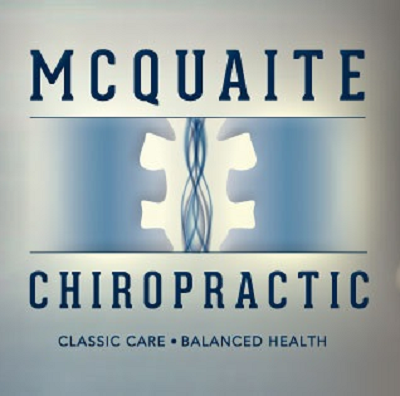Neck pain is no fun.
One common cause of neck pain is as simple as what Dr. Jeff calls “text neck.” If that’s the case, the solution is simple, be aware of how much time you spend looking down at your phone or tablet and try to keep it eye level instead.
But there are plenty of other causes for neck pain too.
Things like whiplash, a slipped disc, or a pinched nerve are painful and relatively common. In rare instances, neck pain can indicate serious diseases like lymphoma.
In a minute, I’ll share more about these but first, let’s think about the structure of your neck so it makes sense WHY it’s so easy to strain it.
Vertebrae are the Building Blocks in Your Neck
As Medicine.net says, “ There are seven vertebrae that are the bony building blocks of the spine in the neck (the cervical vertebrae) that surround the spinal cord and canal. Between these vertebrae are discs, and nearby pass the nerves of the neck. Within the neck, structures include the skin, neck muscles, arteries, veins, lymph nodes, thyroid gland, parathyroid glands, esophagus, larynx, and trachea. Diseases or conditions that affect any of these tissues of the neck can lead to neck pain.”
In other words, your neck is strong, yet delicate.
There’s a lot going on with it.
And, your head is heavy.
In fact, did you know that your head weighs an average of 8 pounds? It’s true. It’s no wonder that looking down at a device for extended periods will create neck strain!
Beyond that though, let’s look at some of the other common causes of neck pain.
These are 4 Common Reasons for Neck Pain
- Poor Posture – Slumping causes your head to jut forward which puts pressure on your cervical spine (the vertebrae in the neck.) Do this for hours on end, like when you hunch over a computer, and you can see why your neck would hurt.
Poor posture can also create hyperextension because your vertebrae strain too far (for too long) and it creates pain in your upper back.
Spine-health reminds us that “Good posture, as it relates to the neck, is commonly considered when the ears are positioned directly above the shoulders with the chest open and shoulders back. In this neutral position, also called normal head posture, stress on the neck is minimized because the head’s weight is naturally balanced on the cervical spine.”
This is why hours hunched over a computer screen leaves your shoulders and neck tight.
-
-
- Whiplash – If you’ve been in a car accident, you may have experienced whiplash. The impact of hitting another car (or being hit) is jarring to the body, even if it’s a fender bender.
-
Whiplash is what we call a sudden impact of your head moving back and forth.
You may feel fine right away, but a few days later, you may feel achy. If you’ve been in an accident, it’s a good idea to have chiropractic treatment as soon as you can to alleviate any potential. It often doesn’t happen right away but a few days after the fact, you may feel achy. If you’ve been in an accident, it’s a good idea to have chiropractic treatment as soon as you can to alleviate any potential problems.
-
-
- Pinched Nerve Neck Pain – You probably know the expression, “You’re getting on my nerves.” In a way, this comes with some truth to it. While people can’t get on your nerves – not literally – ligaments can and that’s a problem. So can bones and tendons.
With 95 million nerve cells and miles of nerve “traffic” cruising around your body it’s not surprising that ligaments, tendons, or even bones can shift position. This happens when you sit for long periods, when you’re sleeping or if there’s an accident like you fall down a flight of steps. When these get “off track” they put pressure on a nerve and cause you pain.
- Pinched Nerve Neck Pain – You probably know the expression, “You’re getting on my nerves.” In a way, this comes with some truth to it. While people can’t get on your nerves – not literally – ligaments can and that’s a problem. So can bones and tendons.
-
- Degenerative Disc Disease – You’re probably aware that you have discs in your back.
As the doctors at Cedar-Sinai tells us “The discs are like shock absorbers between the bones of the spine and are designed to help the back remain flexible while resisting terrific forces in many different planes of motion.
Each disc has two parts:
-
- 1- A firm, tough outer layer, called the anulus fibrosus. The outer portion of this layer contains nerves. If the disc tears in this area, it can become quite painful.
-
- 2- A soft, jellylike core, the nucleus pulposus.
-
- This part of the disc contains proteins that can cause the tissues they touch to become swollen and tender. If these proteins leak out to the nerves of the outer layer of the disc, they can cause a great deal of pain.”
-
You can find out more about degenerative disc disease here.
These are just four common causes for neck pain. Each of them can be helped with massage therapy and regular chiropractic treatments. Are you ready to book yours? We’re located in Doylestown, on Logan Street across from Central Bucks East High School.

